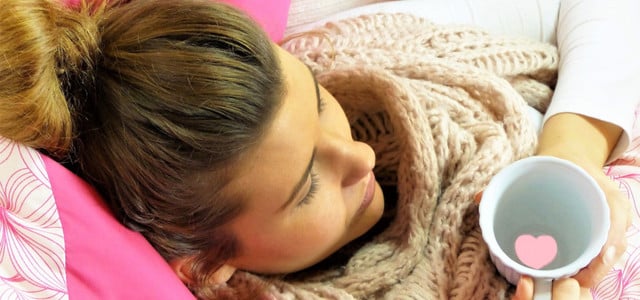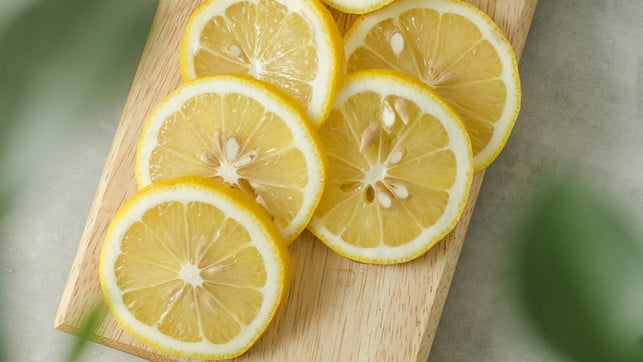
Every year again: the cold period is there. Ctry, flu, cold – there are some myths and misunderstandings around the virus infections. Here you can find out what is true – and what is not. And if you are familiar with colds, you can better protect yourself and relieve complaints.
Myth 1: Flu is only an extended cold
Incorrect! A flu is not the next level of a cold. And a flu infection (a so -called cold) and flu are two different diseases that are triggered by different pathogens. The symptoms are usually more serious in the event of a flu, in the worst case it can also be fatal in people with a weak immune system.
- Signs of a cold: it is rather slow and often begins with a slight scratch of neck and frequent sneezing. In the event of a cold, the airways are particularly affected.
- Signs of flu: a flu (influenza) mostly begins very suddenly with high fever, head, joint and body aches. Runny nose rarely occurs. Usually you feel really sick with a real flu.
Myth 2: Antibiotics help with a cold
Incorrect! Both a cold and flu are caused by viruses and not by bacteria. However, antibiotics are ineffective for viruses. They help with bacterial infections or if there is bacterial complications in the course of flu (e.g. pneumonia, bronchitis or tonsillitis).
Myth 3: Pull up the nose is unhealthy
Incorrect! Even if it is not exactly aesthetic: pulling up the nose is actually better than sniffing too hard into the handkerchief. Because: If you sneak in handkerchiefs, build pressure on the inside of the nose. “In the case of runny nose, you should only clean your nose carefully, otherwise the mucus will be catapulted into the sinuses or in the middle ear,” explains the professional association of ear, nose and throat doctors. In the worst case, the common germs cause sinusitis.
But pulling up the mucus also carries risks: “When pulling up, germs can get into the airways and trigger bronchitis there,” said MDR’s fact check. Getting rid of the mucus is more complicated than expected. No matter which method you choose: Apply as little pressure as possible, then do not damage both the pull up and snort.
If you use handkerchiefs, you should definitely dispose of it correctly:
Myth 4: Sport in moderation does not harm
Incorrect! This is an error that can be dangerous. Colds weaken the body that aligns its immune system to combat bacteria and viruses. The opposite is the case: Anyone who drives a cold sport – even if this does not happen intensely – weakens their immune defense. In the worst case, secondary diseases are possible, up to dangerous heart muscle infections.
Myth 5: A cold can be sweated out in the sauna
Incorrect! What applies to sport applies similarly to the sauna: Once you are ill – even if it is only light – the immune system is weakened by the high temperatures in the sauna. Those who have a cold seem to their cardiovascular system unnecessary stress. In healthy people, saunas as well as regular sporting activities can help strengthen the immune system.
Myth 6: Hot milk with honey is good for the body
That’s correct! A cold is often accompanied by agonizing sore throat, warm milk with honey can alleviate the unpleasant symptoms in the throat. The reason: honey contains anti -inflammatory ingredients.
A lot is generally important for colds, so the mucus is solved and removed.

Myth 7: A flu vaccination also protects against colds
Incorrect! That is (unfortunately) not. A flu vaccination can only protect against influenza viruses. A cold is triggered by other viruses (e.g. rhinoviruses, adenoviruses).
Myth 8: Cold feet lead to a cold
Is only partially true. With moist hair out into the cold or cold feet after the walk – for many, the connection seems logical: a cold comes from cold. Right is: if we are cold for a long time, our immune system can weaken it. And with that, pathogens have easier play. However, viruses are required to trigger a cold.
Myth 9: Washing hands protects
True. Wash your hands to protect yourself from illnesses is effective. Because our hands are number 1 germ coating. According to the Federal Center for Health Education (BZGA), around 80 percent of the infectious diseases are transferred over the hands. If you touch your face after touching the door handle or the holding rods on the bus, you can quickly transfer the pathogens to the mucous membranes. Expert: Inside: thorough and regular hand washing reduces the risk of infection.
Myth 10: Vitamin C protects against colds
Incorrect! This is also a misconception. There is no scientific evidence that vitamin C can prevent colds in high doses or heal an illness. However, people who are missing vitamin C are more susceptible to infections.
In Germany, we usually take up sufficient vitamin C with a balanced diet, according to the German Nutrition Society (DGE). The DGE therefore does not recommend a routine intake of a vitamin C preparation to prevent and treat colds. For adequate supply of vitamin C, the GGE recommends five servings of vegetables and fruit a day. In winter, citrus fruits, peppers, cabbage and potatoes are important vitamin C suppliers.
And what about zinc that is contained in many colds alongside vitamins? The consumer center summarizes the study situation as follows: “So far, there is no secure evidence that zinc is preventing colds. However, a study evaluation (meta-analysis) comes to the conclusion that zinc in very high doses (45-300 mg/day over 14 days) uses for colds that can shorten the disease duration by up to two days.” However, such large quantities are subject to prescription.
Myth 11: Nasal spray can make you addicted
Partially correct. As helpful, swelling nasal sprays are, some preparations can make it dependent. The active ingredients oxymetazoline and xylometazoline are problematic. They ensure that the vessels contract in the nasal mucous membranes and swell the mucous membranes.
If the sprays are used for too long, the mucous membranes get used to it and there is a rebound effect. They quickly swell as soon as the effect of the nasal spray subsides. This can cause those affected to use the sprays again and again. It is therefore important not to apply decongestant nasal sprays for more than seven days in a row.
The better alternative are nasal sprays with table salt, nasal showers or inhaling with water vapor.
Note: If the cold lasts longer, you should look for medical advice.
With material of the dpa.
** marked with ** or orange underlined Links to sources of supply are partially partner links: If you buy here, you will actively support Techzle\.com, because we will then receive a small part of the sales proceeds. More information.